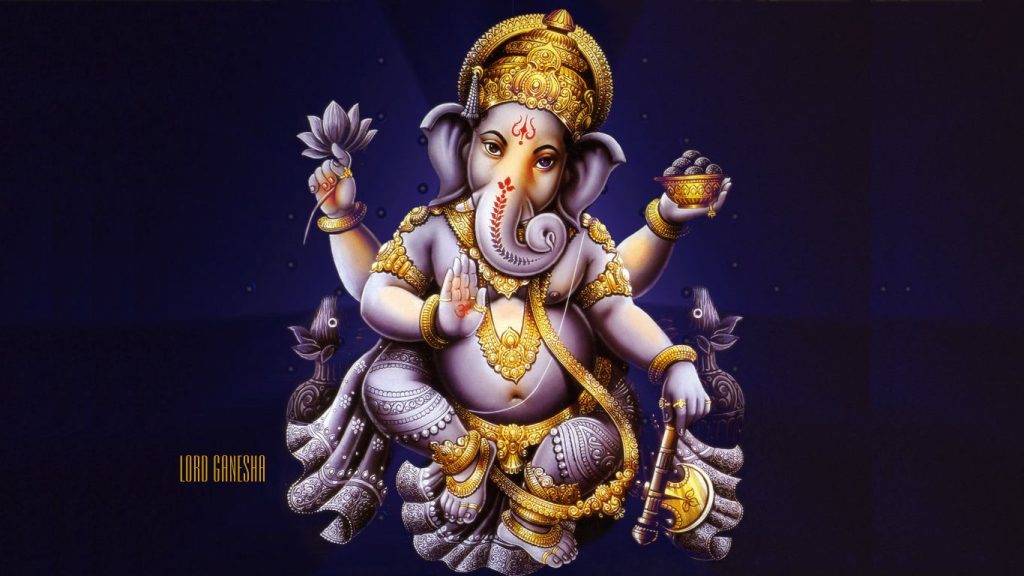Symbolism in Ganesha’s Accessories
The Broken Tusk (Ekadanta)
One of the most prominent symbols associated with Ganesha is his broken tusk. According to mythology, Ganesha sacrificed his own tusk to use as a writing tool during the transcription of the epic Mahabharata. This act of self-sacrifice carries deep symbolic significance. It teaches us the value of relinquishing our own ego and attachments in pursuit of higher knowledge and wisdom. The broken tusk also serves as a reminder that imperfections can be transformed into sources of strength and creativity. Ganesha’s broken tusk represents the idea that what may seem imperfect on the surface can, in fact, hold immense beauty and wisdom within.

The Serpent (Naga)
Ganesha is often depicted wearing a serpent as a sacred thread (yajnopavita) around his torso or as a garland around his neck. The serpent symbolises his mastery over primal energies and his ability to transcend fear and danger. It represents the kundalini energy, which, when awakened, leads to spiritual awakening and enlightenment. The presence of the serpent in Ganesha’s iconography reminds devotees to conquer their inner demons and desires, transforming them into sources of spiritual power and wisdom.
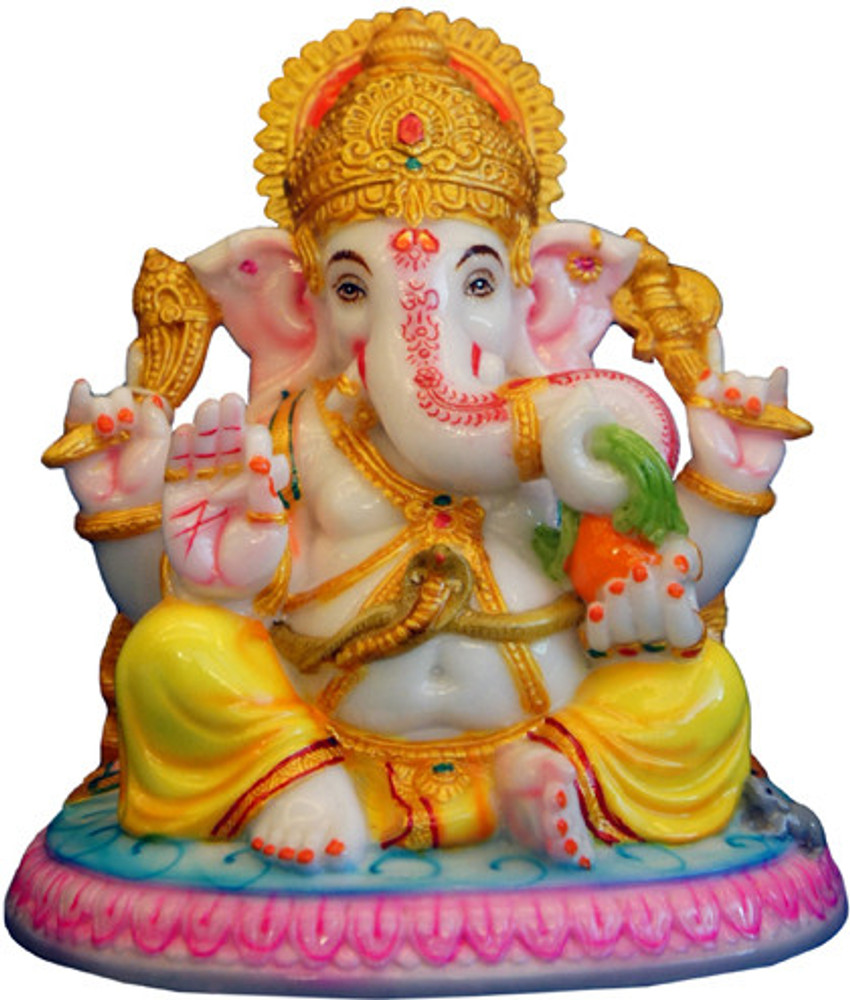
The Crescent Moon (Chandra)
Ganesha is sometimes depicted with a crescent moon adorning his forehead, resembling a tiara. This celestial symbol carries several layers of symbolism. The moon represents the passing of time and the cyclical nature of life. It symbolizes the constant change and flux in the universe. Ganesha’s ability to wear the moon on his head signifies his divine authority over the course of destiny. It reminds devotees that life’s ups and downs are under the watchful gaze of the divine and that Ganesha guides them through these fluctuations.
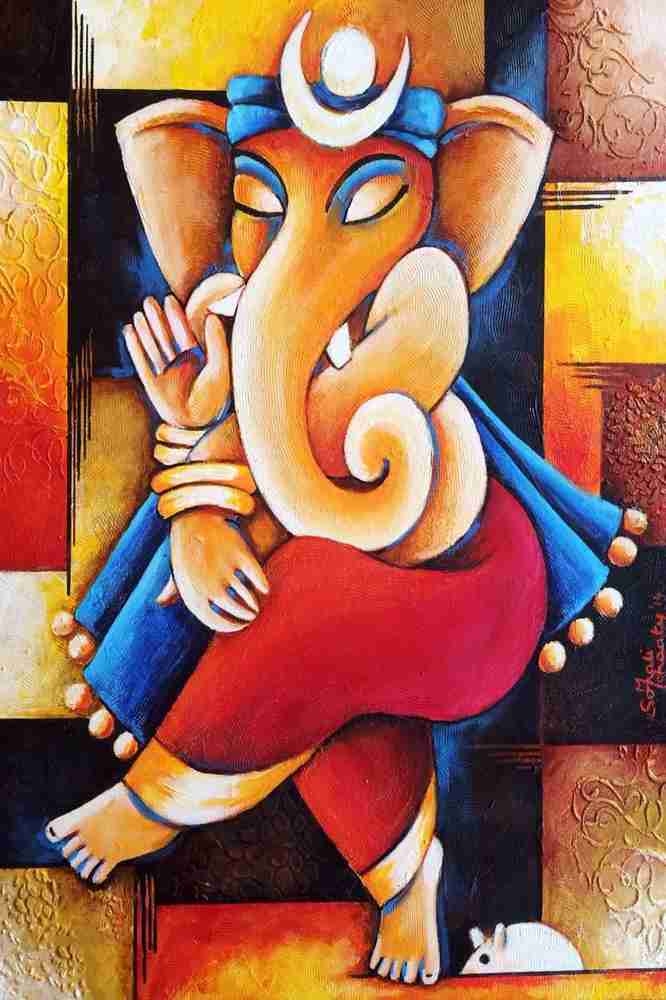
The Axe (Parashu)
In some depictions, Ganesha carries an axe, known as the parashu, in one of his hands. The axe symbolizes the cutting of attachments and delusions. Just as an axe is used to remove obstacles by cutting through barriers, Ganesha, with his symbolic axe, helps devotees break free from the bonds of ignorance and ego. This accessory encourages individuals to let go of what hinders their spiritual progress and embrace the path to self-realisation.

The Lotus (Padma)
Ganesha is often portrayed holding a lotus flower. The lotus is a sacred and highly symbolic flower in Hinduism. It represents purity, enlightenment, and spiritual awakening. Ganesha’s connection to the lotus suggests that he guides his devotees towards spiritual growth, encouraging them to rise above the muck and challenges of life, just as the lotus blooms above the muddy waters. It signifies the potential for inner transformation and the pursuit of higher consciousness.
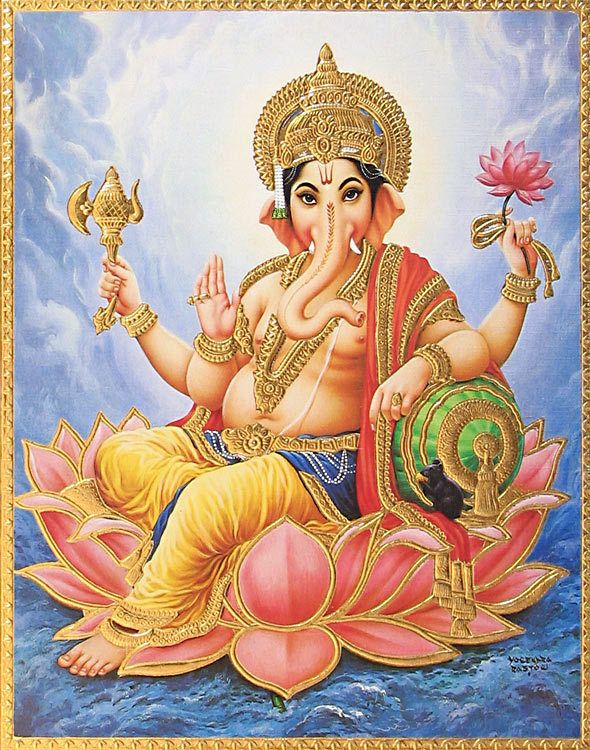
Each of these accessories and symbols in Ganesha’s iconography adds depth to his representation and offers profound spiritual teachings. They serve as visual reminders of the deity’s role as a guide, protector, and source of wisdom. As devotees contemplate these symbols, they are encouraged to reflect on their own lives and spiritual journeys, seeking to embody the qualities and lessons symbolized by Ganesha’s accessories.
Colour and Posture in Ganesha’s Iconography
Color Symbolism
Ganesha’s colour, typically depicted as red or yellow, carries symbolic significance. In Hindu iconography, colors hold profound meanings, and Ganesha’s color choices are no exception.
- Red: The color red is often associated with action, energy, and transformation. It symbolizes the dynamic nature of life and the force that drives change. In Ganesha’s iconography, the red color can signify his role as the remover of obstacles, emphasizing the need for active participation in one’s spiritual journey. It encourages devotees to take initiative and overcome challenges with determination.
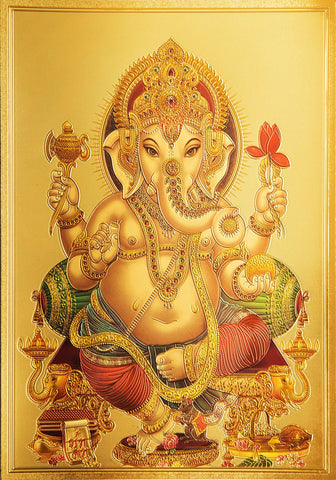
- Yellow: Yellow represents knowledge, wisdom, and intellect. It is the color of the sun, which illuminates the world and dispels darkness. Ganesha’s yellow hue signifies his role as a source of enlightenment and intellectual prowess. It encourages devotees to seek wisdom, pursue education, and embrace intellectual growth.
Posture Symbolism
Ganesha’s posture in his various depictions conveys a sense of divine grace, balance, and symbolism.
- Sitting Posture (Asana): Ganesha is often depicted in a seated posture, known as the “lalitasana.” In this posture, he sits with one leg folded and the other resting on the ground. This position signifies his relaxed and approachable nature. It invites devotees to approach Ganesha with ease, as they would a dear friend or a wise mentor. The lalitasana also conveys a sense of inner calm and stability, reminding devotees to maintain their composure even in the face of life’s challenges.
- Dancing Posture (Nritya): In some depictions, Ganesha is shown in a dancing pose, often called the “Nritya Ganapati.” This posture represents the joy and enthusiasm of spiritual realization. It reminds devotees that the spiritual journey can be a celebration of life and that Ganesha is not only a remover of obstacles but also a source of inspiration and joy.
- Standing Posture (Stambha): Though less common, Ganesha is also depicted in a standing posture, symbolizing his stability and unyielding nature. It suggests that Ganesha is a pillar of strength for his devotees, providing unwavering support and protection.
- Meditative Posture (Dhyana): In some representations, Ganesha is shown in a meditative pose, known as “Dhyana Ganapati.” This posture emphasizes his role as a guide to inner peace and spiritual contemplation. It encourages devotees to engage in meditation and introspection, seeking a deeper connection with the divine.
Ganesha’s color and posture in his various forms convey a multi-dimensional representation of his character and attributes. They inspire devotees to embrace qualities such as action, wisdom, calmness, joy, and introspection in their own lives. As individuals contemplate Ganesha’s colorful presence and graceful postures, they are reminded of the vibrant spectrum of spiritual experiences and teachings that he embodies, inviting them to walk a path of enlightenment and personal growth.
Cultural Variations and Regional Depictions
India’s Cultural Diversity
India is a land of incredible cultural diversity, and this diversity is beautifully reflected in the various regional depictions of Lord Ganesha. Each region and community within India brings its unique interpretations, stories, and artistic styles to the worship of Ganesha. These diverse representations serve as a testament to the richness of Indian culture and spirituality.
1. Siddhivinayak – Maharashtra
In Maharashtra, Ganesha is widely revered as “Siddhivinayak,” which translates to “the bestower of success.” The Siddhivinayak Temple in Mumbai is one of the most famous Ganesha temples in India. The unique feature of Siddhivinayak Ganesha is his right trunk, which curves towards his right, signifying a special blessing. Devotees flock to this temple to seek Ganesha’s blessings for success, prosperity, and the removal of obstacles.

2. Bal Ganesh – Rajasthan
In Rajasthan, Ganesha is often depicted in his youthful form, known as “Bal Ganesh” or “Baby Ganesha.” This portrayal highlights his innocence, playfulness, and childlike charm. Bal Ganesh is typically depicted in vibrant and colourful artwork, capturing the imagination of children and conveying the message of divine protection and guidance from a young age.
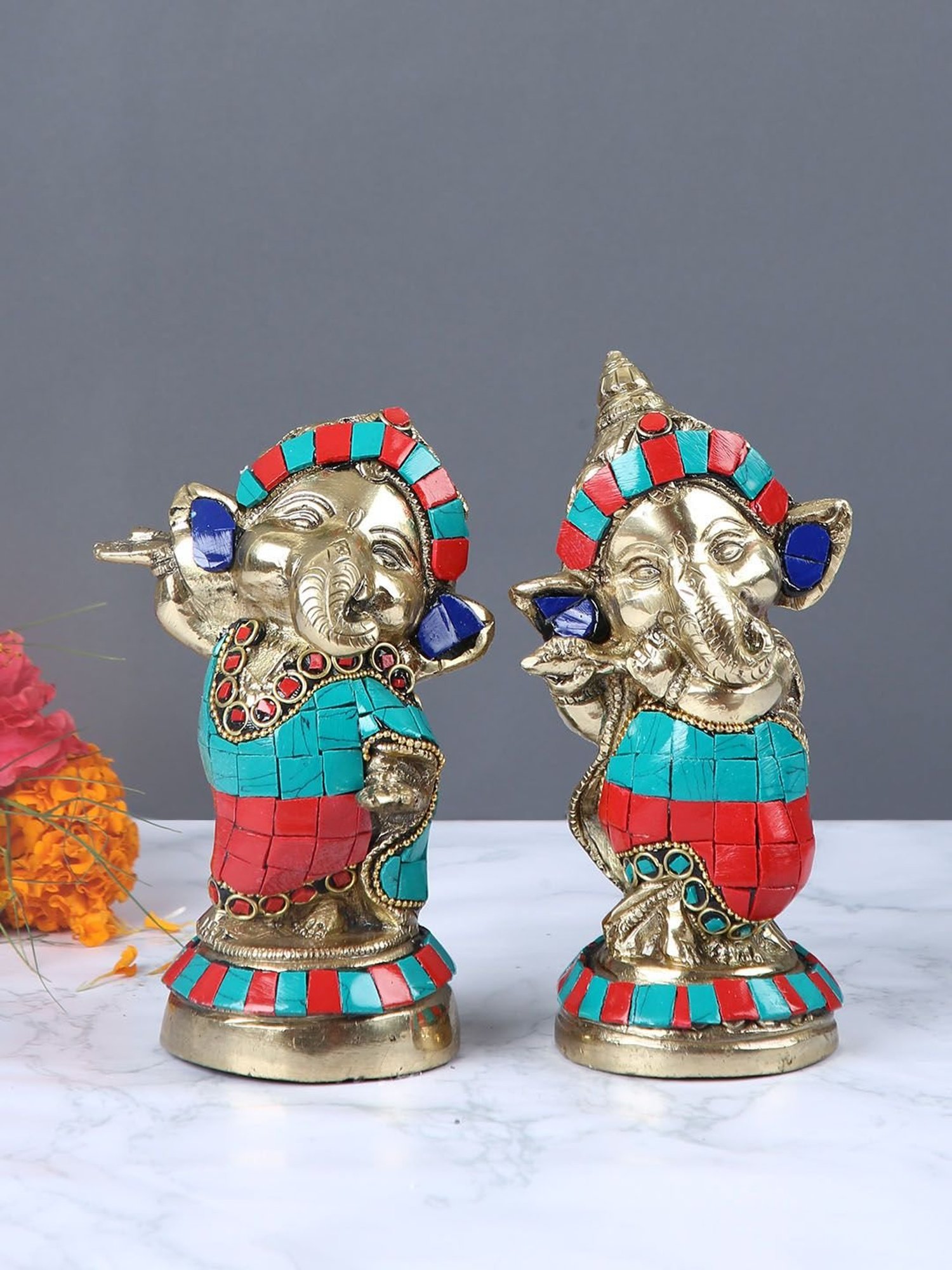
3. Ganesha in South India
Southern India has its own unique Ganesha traditions. In Tamil Nadu, Ganesha is often depicted with a more human-like form and is known as “Pillaiyar.” His connection to literature and the arts is emphasized in this region. The “Pillaiyar Suzhi” or Ganesha’s divine pen is a common symbol, highlighting his association with wisdom and knowledge.

4. Ucchista Ganapati – Tantric Depictions
In certain esoteric and tantric traditions, Ganesha is represented as “Ucchista Ganapati.” This form of Ganesha is depicted in a tantric posture, sometimes with a tantric consort. It symbolises the integration of spiritual and worldly aspects of life, emphasising the transcendence of dualities.

5. Ganesha in Southeast Asia
Beyond India, Ganesha is also revered in Southeast Asian countries like Thailand, Indonesia, and Cambodia. In these regions, Ganesha’s depictions often incorporate local artistic styles and cultural influences. For example, in Thailand, Ganesha is known as “Phra Phikanet” and is associated with good luck and fortune.

6. Western Interpretations
In the Western world, Ganesha’s image has transcended its religious context and found a place in various forms of art, fashion, and pop culture. His image is sometimes used to convey a sense of spirituality, wisdom, or even as a symbol of universal interconnectedness.
These regional and cultural variations in Ganesha’s depictions demonstrate the adaptability and universality of his symbolism. While the core attributes and teachings associated with Ganesha remain consistent, his visual representation evolves to resonate with the unique cultural contexts and spiritual aspirations of different communities. It reflects the enduring appeal of Ganesha as a deity who transcends boundaries and continues to inspire people of diverse backgrounds worldwide. As we explore these regional depictions, we gain a deeper appreciation for the multifaceted nature of Ganesha’s symbolism and his ability to connect with people on a personal and cultural level.
Ganesha Festivals and Rituals
Ganesh Chaturthi – The Grand Celebration
One of the most significant and widely celebrated festivals dedicated to Ganesha is Ganesh Chaturthi. This festival, which typically falls between August and September, marks the birth anniversary of Lord Ganesha. It is observed with great fervor and devotion across India, especially in the state of Maharashtra. The festival extends over ten days, during which intricate clay idols of Ganesha are crafted, decorated, and worshipped in homes and public pandals (temporary shrines).
Rituals during Ganesh Chaturthi
- Prana Pratishtha: The festival begins with the installation of Ganesha idols, a ritual known as Prana Pratishtha. This involves invoking the divine presence into the idol through sacred chants and prayers.
- Offerings (Naivedya): Devotees prepare a wide variety of sweets, fruits, and other offerings to Ganesha. Modak, a sweet dumpling, is considered the deity’s favorite and is prominently featured in the offerings.
- Aarti and Bhajans: Devotees sing devotional songs (bhajans) and perform aarti (a ritual of waving lit lamps) to Ganesha, expressing their love and devotion.
- Visarjan (Immersion): On the last day of the festival, the Ganesha idols are taken in grand processions to rivers, lakes, or the sea for immersion, accompanied by music and dance. This ritual symbolizes the temporary visit of Ganesha to the mortal world and his return to the divine realm. The immersion is a poignant moment, filled with both celebration and a sense of farewell.
Ganesha in Daily Worship
Apart from Ganesh Chaturthi, Ganesha holds a special place in daily Hindu worship. Many households have a Ganesha idol or image, and it’s common to offer prayers to Ganesha before starting any new endeavor, journey, or important task. The offering of modak, his favorite sweet, is a customary practice during these daily rituals.
Weddings and Ceremonies
Ganesha is also invoked at the beginning of weddings and other significant ceremonies. Before any major event, Ganesha is worshipped to seek his blessings for a smooth and obstacle-free proceeding. His presence is believed to ensure the success and harmony of such occasions.
Education and Learning
In India, Ganesha is revered as the patron of learning and the arts. Students often seek his blessings before examinations and academic pursuits. Special prayers and rituals are dedicated to Ganesha during important educational milestones.
Business and Prosperity
Ganesha is also regarded as the deity of commerce and prosperity. Many business owners and entrepreneurs keep his idol in their shops or offices, offering prayers for success and financial well-being.
Regional Variations in Rituals
As discussed above, the rituals associated with Ganesha can vary by region and community. Each region may have its unique customs, traditions, and ways of expressing devotion to Ganesha. These variations add depth and diversity to the worship of Ganesha, highlighting his adaptability to different cultural contexts.
Ganesha festivals and rituals not only serve as occasions for religious devotion but also bring communities together, fostering a sense of unity and shared cultural identity. They are a vibrant expression of the enduring love and reverence for Lord Ganesha, whose iconography and teachings continue to inspire and guide millions of people in their spiritual, personal, and communal journeys.
Contemporary and Pop Culture Depictions of Ganesha
Art and Creativity
In recent years, Ganesha has found a place in contemporary art and creative expressions. Artists worldwide have incorporated Ganesha’s image into their works, using various mediums such as painting, sculpture, digital art, and mixed media. These interpretations often blend traditional iconography with modern aesthetics, creating a fusion of the sacred and the contemporary.
Fashion and Jewelry
Ganesha’s image has also made its way into the world of fashion and jewelry. His likeness adorns clothing, accessories, and jewelry pieces, offering a unique blend of spirituality and style. Many people wear Ganesha-inspired jewelry, not only as a fashion statement but also as a symbol of protection and guidance.
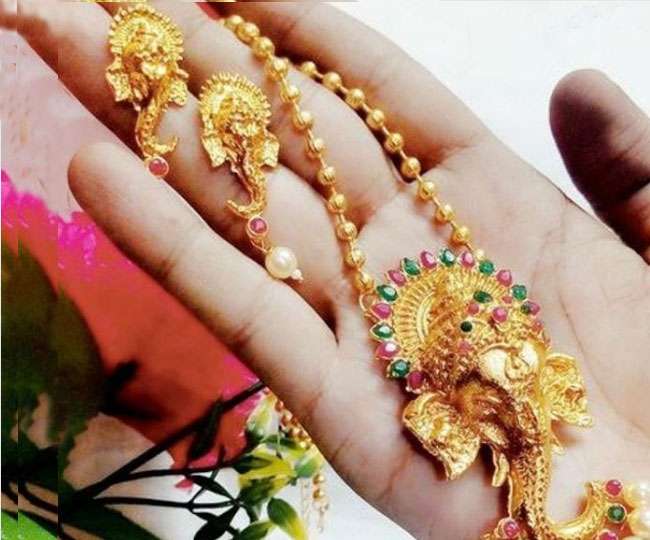
Tattoos and Body Art
Ganesha tattoos have gained popularity among individuals seeking a permanent representation of the deity’s symbolism in their lives. These tattoos often feature intricate and artistic designs, with Ganesha’s image prominently displayed on various parts of the body. Each tattoo can carry personal significance, such as the removal of obstacles or a connection to spiritual growth.
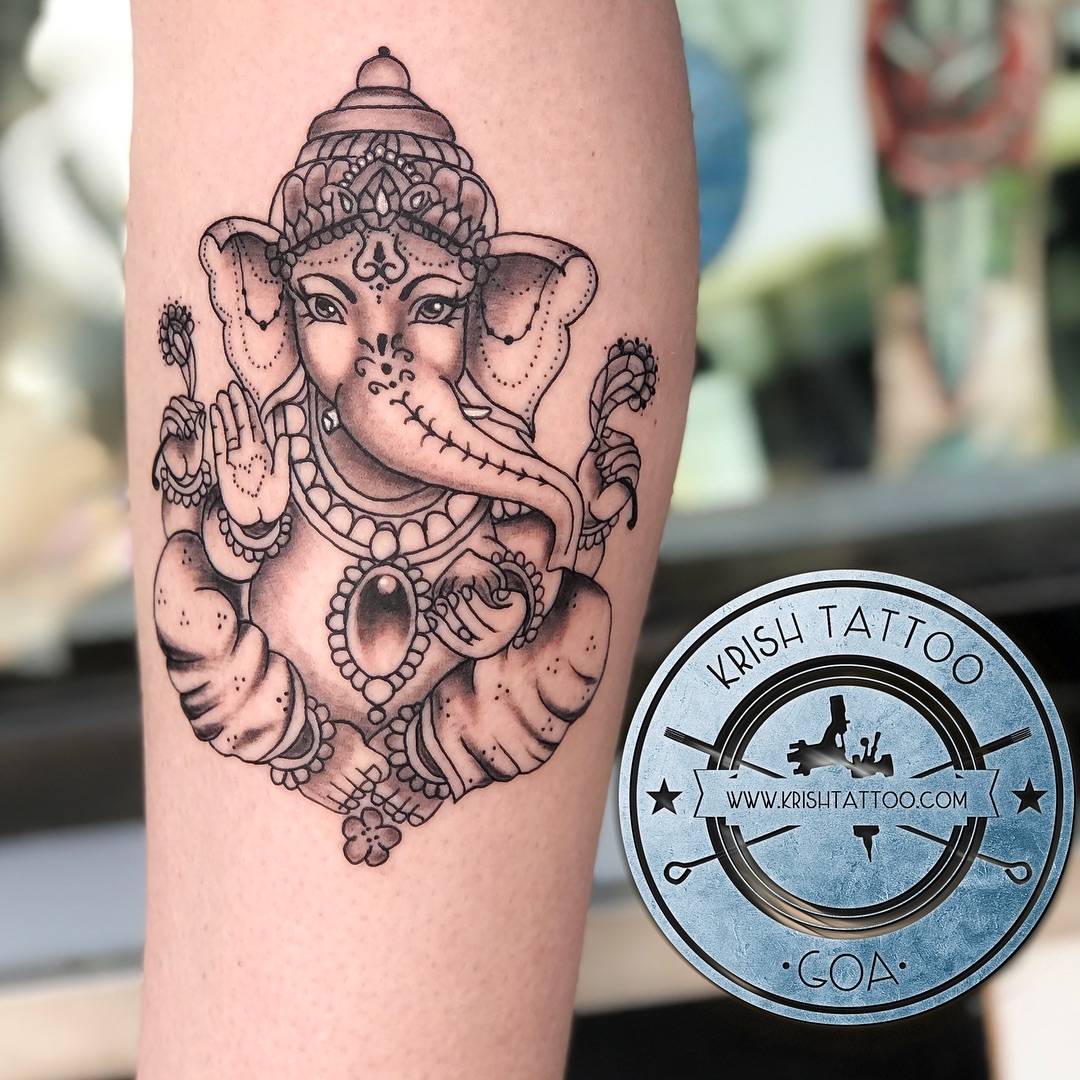
Music and Entertainment
Ganesha’s influence extends to the world of music and entertainment. Musicians and composers have incorporated Ganesha’s name and blessings into songs and compositions. His imagery is sometimes featured in music videos and album covers. In the realm of dance and performing arts, Ganesha is a popular subject for choreography and theatrical performances.

Literature and Poetry
Writers and poets draw inspiration from Ganesha’s symbolism in their literary works. His image and stories are often woven into poems, stories, and novels. Ganesha’s qualities of wisdom, intellect, and benevolence are explored through the written word, providing readers with deeper insights into his significance.
Yoga and Mindfulness
In the field of yoga and mindfulness practices, Ganesha’s image is sometimes used as a focal point for meditation and reflection. His symbolism of removing obstacles aligns with the goals of inner peace and self-realisation sought by practitioners. Ganesha’s image can be found on yoga mats, meditation cushions, and wellness products.
Global Recognition and Cultural Exchange
Ganesha’s presence has transcended cultural boundaries, gaining recognition and respect in many parts of the world. He is often featured in interfaith dialogues and cultural festivals, showcasing the universal appeal of his teachings and symbolism. As a symbol of wisdom, unity, and diversity, Ganesha promotes cultural exchange and mutual understanding.
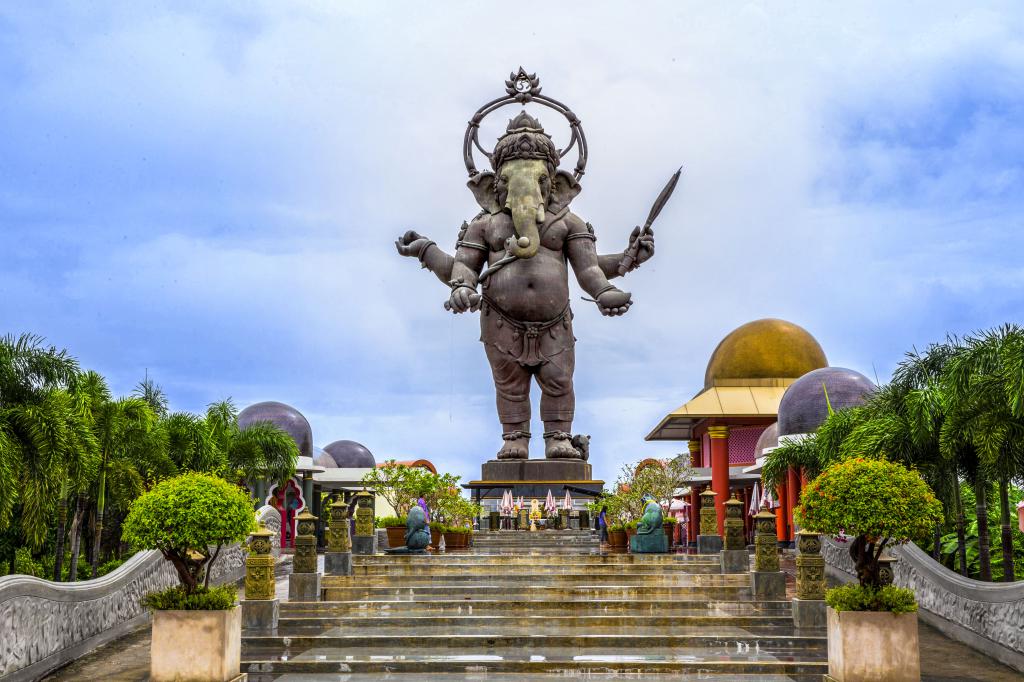
Respect and Sensitivity
While Ganesha’s image is appreciated and respected in various contemporary and pop culture contexts, it is essential to approach his depiction with sensitivity and understanding of the deity’s sacred significance in Hinduism. Many Hindus hold deep reverence for Ganesha, and it’s important to be mindful of cultural and religious sensitivities when incorporating his image into artistic, fashion, or entertainment expressions.
Conclusion
Ganesha’s iconography, rooted in ancient tradition and spirituality, continues to inspire and resonate with people across the globe. His image has the unique ability to bridge the gap between the sacred and the contemporary, offering a source of wisdom, creativity, and spiritual connection in today’s diverse and interconnected world. As Ganesha’s symbolism continues to evolve and adapt, it reflects the enduring relevance and universal appeal of this beloved Hindu deity.
Ganesha’s Iconography: A Multifaceted Journey from Mythology to Modernity (Part 1)

Contributor


